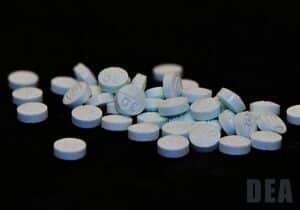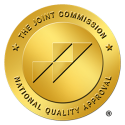In today’s digital age, teenagers are confronted with myriad challenges, not least of which is exposure to and experimentation with drugs. The increasing availability of substances and a shifting cultural perspective have made drug use a significant concern for parents, educators, and health professionals alike. But which drug tops the list as the most commonly used among teenagers?
Alcohol and Marijuana: Leading Contenders in Current Teen Drug Trends
While harder drugs like cocaine or opioids may dominate headlines, when it comes to teenage drug use, alcohol and marijuana are the frontrunners.
Alcohol: Despite its legal age restriction, alcohol remains a drug of choice for many teens. High school parties, peer pressure, and the age-old desire to fit in can make alcohol seem like an attractive option for youngsters. According to the Monitoring the Future Survey conducted in 2020, almost 53% of 12th graders admitted to consuming alcohol in the past year.
Marijuana: The debate surrounding marijuana, especially given its recent legalization in many states, has made it a hot topic among teens. Some view it as a safe, natural alternative to other drugs. The same survey revealed that about 43% of high school seniors had used marijuana, with daily use increasing over the past decade.
Alcohol Effects on the Teen Brain
Drinking alcohol can have a significant impact on brain development, especially in young individuals under the age of 15. Our brains continue to evolve during our teenage years, with areas like the frontal lobe and hippocampus undergoing the most transformation. These regions play crucial roles in motivation, impulse control, and susceptibility to addiction.
Being a neurotoxin, alcohol can damage the brain. Consuming alcohol in large amounts can disrupt the absorption of vitamin B, a key nutrient for optimal brain function. So, while a sip here and there might seem harmless, it’s essential to understand the deeper consequences, especially for younger individuals.
Marijuana Effects on the Adolescent Brain
In a mind opening statistic from 2021, out of the 52.5 million people aged 12 and above who acknowledged using marijuana, a significant 35.4% – the majority of users – were young adults between 18 and 25 years old. Meanwhile, teenagers between 12 to 17 years made up 10.5% of this figure.
Recent research indicates that regular cannabis use might influence the growth of the cerebral cortex, a pivotal part of the brain that oversees decision-making and complex cognitive tasks. Published in JAMA Psychiatry in 2021, this study delved into the brain’s developmental changes among 799 teenagers aged between 13 and 17. These adolescents underwent MRI scans at the beginning of the study and then again after a five-year span.
This comprehensive research holds the distinction of being the most expansive longitudinal study focusing on the brain’s response to cannabis over an extended period. An important aspect to note is that all the participants were initially free from any cannabis exposure, enabling a clear assessment of the substance’s effects over the years.
The findings revealed a concerning pattern. Cannabis use was linked to a noticeable thinning in the prefrontal cortex. Moreover, the extent of this thinning was directly proportional to the amount of cannabis consumed. In simpler terms, higher usage led to more pronounced thinning.
The team observed that this increased thinning in the cortex was tied to impulsive attention, although no significant connections to other cognitive functions were identified. It’s worth mentioning that other studies focusing on the teenage brain post cannabis use have arrived at similar conclusions.
So, what’s the broader picture here? The cerebral cortex, a hub for critical reasoning, is in a transformative phase during our teenage years and only reaches its complete development by about the age of 25.
Considering the fact that the brain is teeming with cannabinoid receptors – which significantly sway its growth pattern – it’s logical to infer that cannabis, especially during these pivotal teenage years, might leave a lasting imprint, given how receptive the adolescent brain is to external factors.
Prescription Drugs and Vaping
While alcohol and marijuana are traditional mainstays, there are newer substances gaining traction among teens.
Prescription Drugs: The opioid crisis in the U.S. has shed light on the dangers of prescription drug misuse. But it’s not just opioids; medications like Adderall or Ritalin, prescribed for ADHD, are often misused by teens seeking a study boost or a high.
Vaping: The rise of e-cigarettes and vaping has paved the way for a new drug trend among teens. With their discreet nature and flavored options, vaping devices have become a favorite. Nicotine-based vaping products are especially popular, with a surge in teen users in recent years.
Influencing Factors
Several factors contribute to the prevalence of certain drugs among teens:
- Perceived Harm: How dangerous a teen perceives a substance to be can significantly influence their likelihood to use it. With growing narratives that marijuana is less harmful, many teens feel more inclined to experiment with it.
- Availability: The easier it is for a teen to obtain a substance, the more likely they are to use it. Alcohol, for example, might be pilfered from a parent’s liquor cabinet, while marijuana might be shared among friends.
- Cultural Trends: Pop culture and the media can glorify substance use, making it appear glamorous or essential for social acceptance.
- Peer Pressure: The desire to fit in or be part of a group can often push teens toward trying substances they might otherwise avoid.
Combating Teen Drug Use
Awareness and education are crucial in combating teen drug use. Schools and communities need to provide comprehensive drug education programs, ensuring teens understand the risks associated with substance use. Parents, too, play a pivotal role:
- Open Communication: Encourage a dialogue about drugs, ensuring teens feel comfortable discussing their concerns or experiences.
- Know their Friends: Being aware of your teen’s peer group can give insights into potential pressures or influences.
- Be Observant: Changes in behavior, grades, or physical appearance can be indicators of drug use.
While the landscape of teen drug use continues to evolve, current data suggests that alcohol and marijuana remain the most commonly used substances. However, with emerging drug trends like vaping and the misuse of prescription drugs, it’s clear that the fight against teen drug use must be multifaceted. As society becomes more informed and proactive, there’s hope for a decrease in these alarming statistics, paving the way for a healthier, brighter future for our youth.
Teen Drug Abuse and Mental Health: An Intertwined Struggle
Teen drug abuse and mental health issues often go hand in hand, creating a complex web of challenges for affected adolescents. Substance abuse can serve as an ill-advised coping mechanism for teens grappling with anxiety, depression, or traumatic experiences. Conversely, regular drug use can exacerbate underlying mental health conditions, leading to intensified symptoms and prolonged recovery periods. The simultaneous presence of both issues — a scenario known as co-occurring disorders — can complicate treatment approaches, necessitating holistic interventions that address both the substance misuse and the emotional or psychological distress. The interrelation between teen drug abuse and mental health underscores the urgent need for early detection, comprehensive therapy, and multi-faceted support systems to guide teenagers towards healthier futures.
Adolescent IOP & Teen IOP: A Focused Approach
One strategic response to the rising teen drug use trend is the implementation of Adolescent Intensive Outpatient Programs (IOP) and Teen IOP. These programs are specifically tailored to meet the unique needs of teenagers grappling with substance abuse and addiction. Unlike traditional inpatient programs, IOPs allow teens to live at home and continue their schooling while receiving intensive treatment multiple days a week. The primary focus of these programs is to provide adolescents with the tools and coping strategies they need to navigate the complexities of their teenage years without resorting to substance use. With group therapy, individual counseling, and family sessions, Teen IOPs offer a comprehensive approach to drug education and rehabilitation, making them a pivotal resource for combating the drug use epidemic among the youth. If you or someone close to you is battling drug addiction or facing mental health challenges, call Iris Wellness Group for help 423-919-9549.










